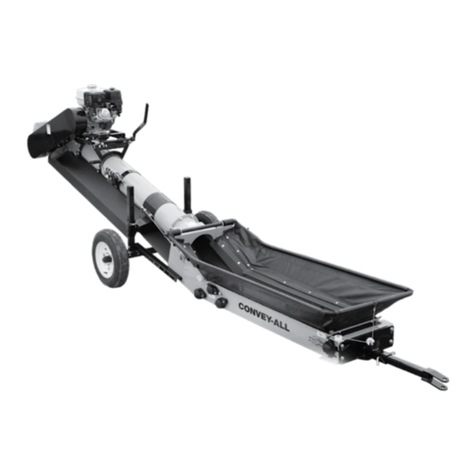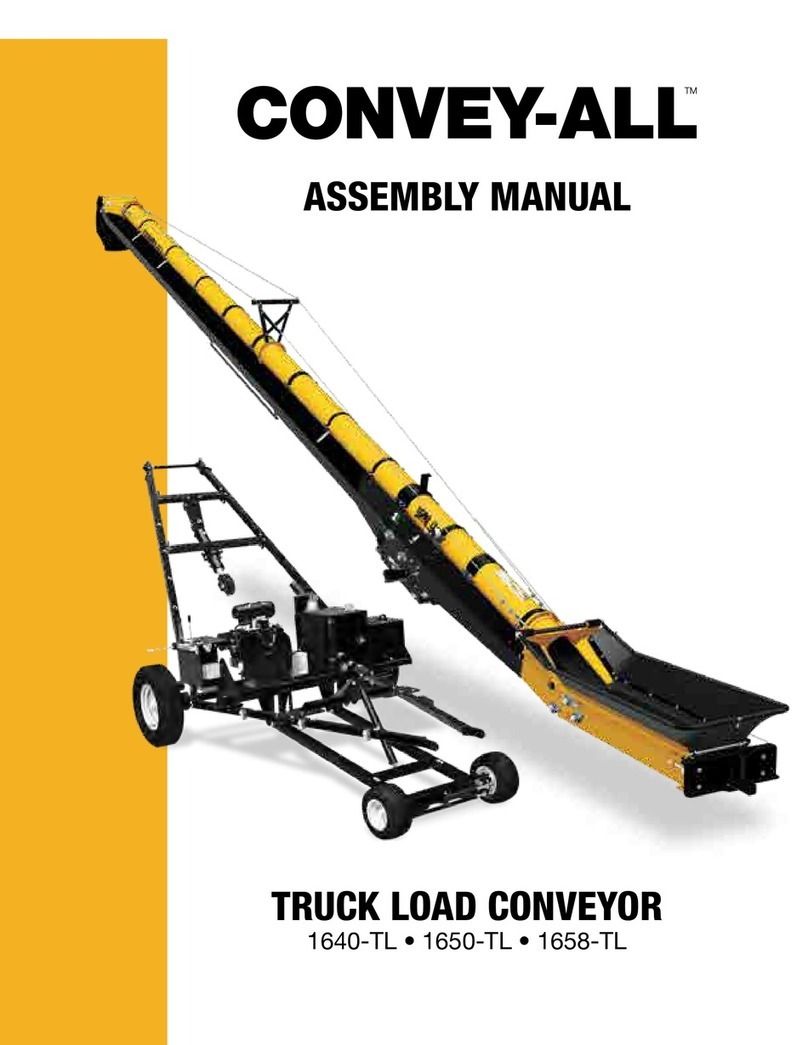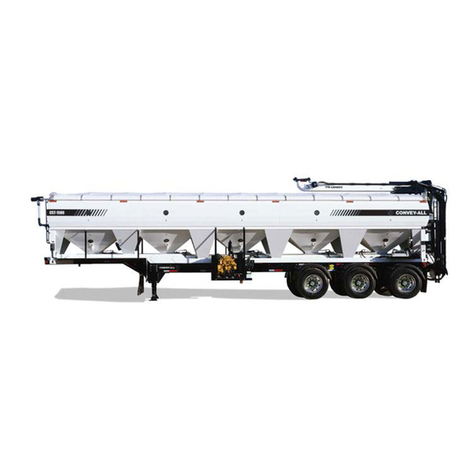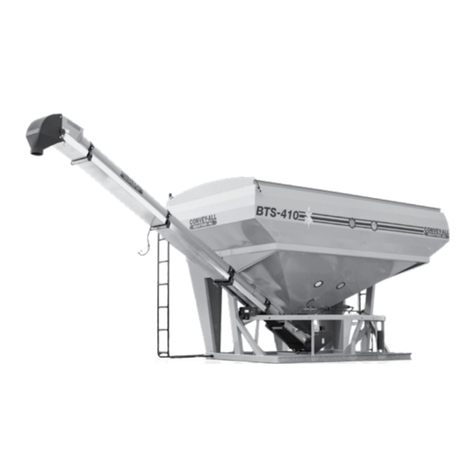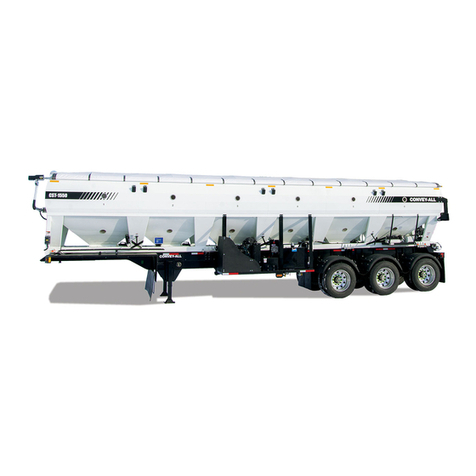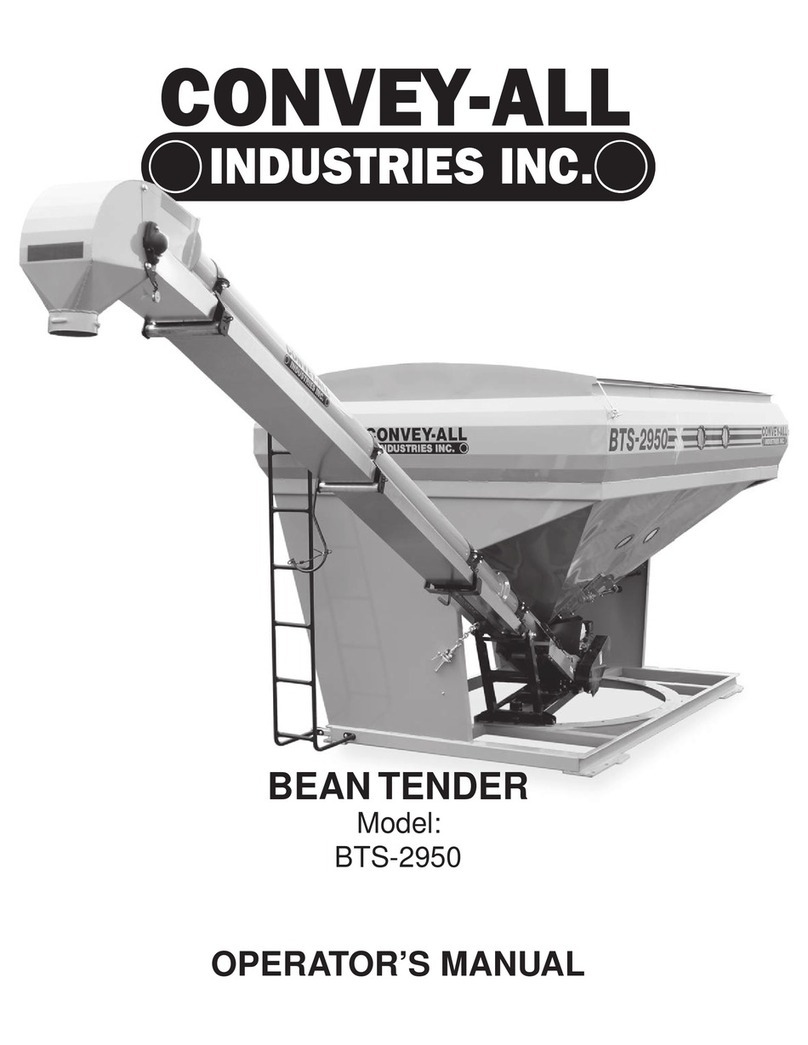
Operator’s Manual: Bean Tender (BTS)
2-2 09.2015
2.1 SAFETY ORIENTATION
YOU are responsible for the SAFE operation and
maintenance of your Convey-All Bean Tender. Be
sure that you and anyone else who will be operate,
maintain or working around it be familiar with the
safety, operating and maintenance procedures.
This manual will take you step-by-step through your
workingdayandalertsyoutoallgood safety practices
that should be adhered to while operating the tender.
Remember, YOU are the key to safety. Good
safety practices not only protect you but also
the people around you. Make these practices a
working part of your safety program. Be certain that
EVERYONE operating this equipment is familiar
with the recommended operating and maintenance
procedures and follows all the safety precautions.
Most accidents can be prevented. Do not risk injury or
death by ignoring good safety practices.
• Seedtenderownersmustgiveoperatinginstructions
to operators or employees before allowing them to
operatethemachine.Proceduresmustbereviewed
annually thereafter per OSHA(Occupational Safety
and Health Administration) regulation 1928.57.
• The most important safety device on this equipment
is a SAFE operator. It is the their responsibility to
read and understand ALL Safety and Operating
instructions in the manual and to follow them. Most
accidents can be avoided.
• An untrained operator exposes himself and
bystanders to possible serious injury or death.
• Unauthorized modification may impair the function
and/or safety and could affect the life of the
equipment.
• Think SAFETY! Work SAFELY!
2.2 GENERAL SAFETY
• Read and understand the Operator’s
Manual and all safety messages before
operating, maintaining or adjusting the
equipment.
• Only trained competent persons shall operate the
tender. An untrained operator is not qualified to
operate the machine.
• Have a first-aid kit available for use
should the need arise and know how to
use it.
• Provide a fire extinguisher for use in
case of an accident. Store in a highly
visible place.
• Do not allow riders.
• Do not allow children, spectators or bystanders
within hazard area of machine.
• Wear appropriate protective gear. This list includes
but is not limited to:
- Hard hat
- Protective shoes with
slip resistant soles
- Eye protection
- Heavy gloves
- Hearing protection
- Respirator or
filter mask
• Place all controls in neutral or off, stop engine,
remove ignition key and wait for all moving parts
to stop before servicing, adjusting or repairing or
unplugging.
• Review safety related items annually with all
personnel who will be operating or maintaining the
tender.

